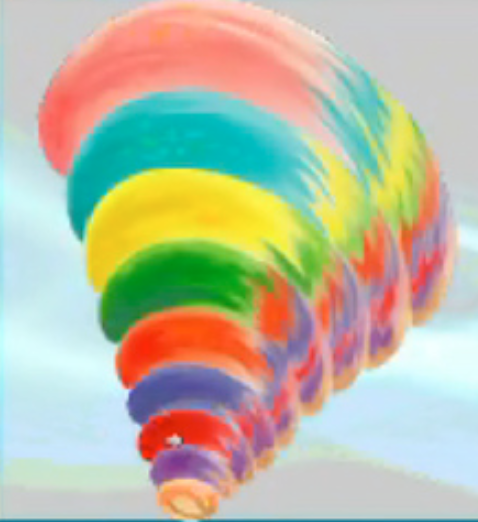Download Episode Here – right click link and select “Save Link As…”
In this episode, Joel and Antonia talk about the Graves Model of development created by Clare Graves.
In this podcast you’ll find:
- Developed by Clare Graves, the Graves Model focuses on Self-Actualization.
- After studying Abraham Maslow’s hierarchy of needs, Clare asked himself, what does Self Actualization mean and happens when we self-actualize?
- He asked a group of people for over 50 years – ‘how would you define a healthy person? He noticed that their responses show a pattern. People were going on different stages of growth and development. He saw a model emerging that both worked on a micro and macro level.
- Beige – Survival Level. Everything is about me and my personal survival. Examples – birth to 4 years old, people who are homeless and have little sensitivity to other people, feral children.
- Purple – Tribal Level. More about our survival as a tribe. Micro – this is where a toddler starts to identify survival as a family/group. Macro – Focused on a group. It’s important not to be kicked out of the tribe. Spiritual development can be observed (how gods impact us as humans, magical thinking).
- Red – Warlord. 15,000 – 20,000 years ago. When one or two people stand out from the rest of the group, they begin to get a lot of attention and are regarded as leaders, they move up to level 3. Goes back about getting ‘me’ again. This is where the rebellious years come. Example – Teens get into fights for no reason. They assume that they know everything and everybody else is halfwit. People learn how to stand-up for themselves. They don’t really believe that they have any right.
- Blue – Civilization. Started about 5,000 – 8,000 years ago. We learn to identify something bigger than us. When territory boundaries are created. Law and rule are made. If we all live under certain rules, we live in a better society. Civilizations create armies and better force. Because everything is in order, we’re seeing relationships between tribes that create institutions and civilizations. Example – World War II.
- Orange – Achievement. Leaders begin to emerge. Developed 150 – 200 years ago. Leaders see resources as limitless, something they can manipulate and master. This is where you find a lot of capitalism. Example – anybody who’s going through any massive achievement. We learn that there’s no reason to limit our selves. Many people keep themselves from going to this level casting limitations on themselves. Science and technology is very important for individuals who are in this level.
- Green – Ecology. 20-50 years ago. Starts to take in a much bigger territory.These are individuals who have met their goals. Example – Bill Gates. They have a more ecological perspective.They start to think in terms of community and how they can give back to the world. They’re more concerned about the impact on a holistic manner. They learn how to give back. The idea of tolerance is introduced. Individuals in this level find it very challenging to accomplish their mission because they’re busy listening to everyone’s perspectives.
- Yellow – Thought Leader – A person who has realized that not every voices needs to give the exact same honour. They are able to communicate with individuals in different levels in order to get what they want in a faster and more productive way.
- Every transition from one level to the next (on a macro level) has been bloody.
- 2 reasons why we go to the next level:
- When the problems we’re facing can’t be solved by our current level so we’re forced to go to the next level.
- When they have fully explored their current level and are not sure what to do.
- The more we go up the level, the more we see things get done on the planet, the less warfare we see in a global level.
- We as individuals have a lot to gain by going up these levels. Even though it causes trauma during transition, our consciousness open up and we see a bigger picture.
- Growth does lead to happiness. People are happier when they are growing.
- If you are interested in the Graves model and understanding where you fit and the implications of it in your life, please feel free to check-out our Your Personality: Owner’s Manual Program.
Exercises we recommend in this podcast about the Graves Model:
Take a piece of paper and draw a vertical line going up and down. Draw 7 horizontal lines (to create 8 horizontal sections) going up. Number each box beginning at the bottom (first little box on the left hand corner) on ascending order (1-8) and use the space adjacent to each number to jot down a few notes and learning points discussed on this podcast.
To subscribe to the podcast, please use the links below:
Subscribe with iTunes
Non iTunes Link
Download The Android App
Subscribe on Soundcloud
Subscribe with Stitcher
If you like the podcast and want to help us out in return, please leave an honest rating and review on iTunes by clicking here. It will help the show and its ranking in iTunes immensely! We would be eternally grateful!
Want to learn more?
Discover Your Personal Genius
We want to hear from you. Leave your comments below…



Share:
Enneagram Personality Types (with Kelly Crowther) | Podcast 0021
Podcast - Episode 0023 - Conscious Awareness
32 comments
That makes a lot of sense. Thanks for answering my question and thanks for podcasting about this. Some big lightbulbs have gone off as a result. I’ve been binging on the model in the few days since and it’s really helped bring about some clarity and focus for me.
Cheers! Thank you for taking the time to leave encouraging words. :)
A
They’re definitely not easy to spot! However, having already gone through 6 is a great tell. If you’re curious about someone’s level, the question is: when did they go through the previous level, and how?
For a 7, when did they go through 6? And what makes it reasonable to believe they’ve graduated?
There are definitely 7’s out there. And it’s entirely possible I’m swimming in them. But I’m dubious. :p
A
My observation is that we have a tendency to prefer the “odd” or the “even” numbers. Which means when we’re in our preference we hang out in that level, and when we’re in the opposite we try to speed through.
For example, I have a preference for the odd numbers. So I sped through 2 and 4, whereas I spent a decade (plus) in 5. We tend to spend a lot of time exploring the levels we like, and try to get through others.
Also, there are times when we go to the next level because the current level is too painful. You’ll see this with little kids in terrible homes where 2 is traumatic. They’ll have a tendency to go to 3 just to deal with their home life – being a rebellious warlord is much nicer than continually seeking unconditional acceptance from people who are abusing you.
I’ve noticed, though, that if we’ve sped through a level and haven’t ‘learned the lesson’ of that level, we’ll often need to revisit it later in life. I think that’s why we see so many 6’s revisiting tribal cultures – that’s where wounding has happened, and they need to go back to learn the lesson that was never picked up.
A
Thank you. I enjoyed your presentation and learned something. That always makes it a good expenditure of time. Will be exploring more.